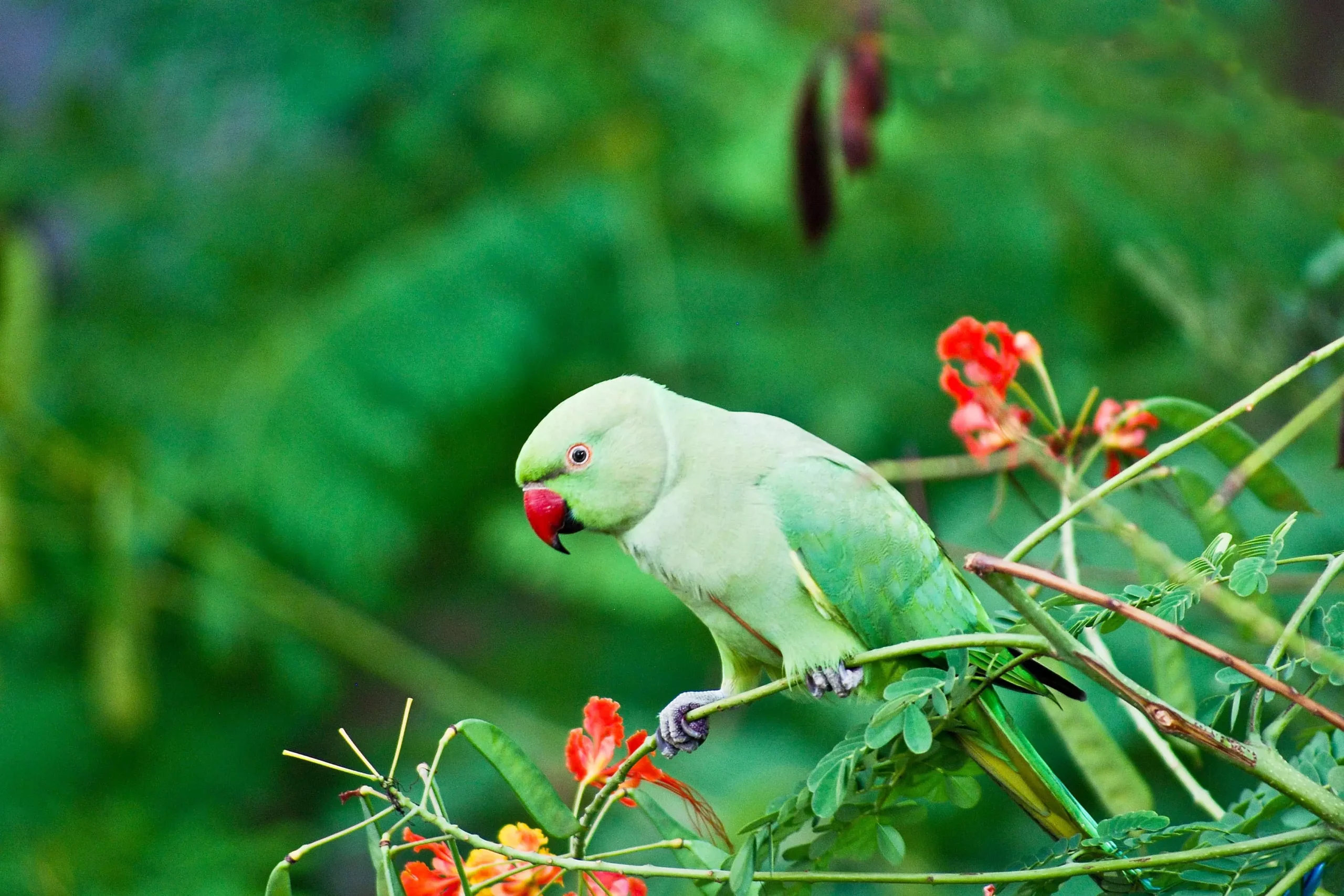The Indian ringneck parakeet, often dubbed the rose-ringed parakeet, stands out for its striking appearance and charming demeanor, making it a beloved companion for many bird enthusiasts. However, prospective owners should remain aware of the demands these birds impose, as they thrive on interaction and mental stimulation. This article delves into the characteristics, care, and challenges associated with having an Indian ringneck parakeet, ensuring that potential owners can make an informed decision about whether they’re ready for such a delightful but demanding pet.
Originating from the lush landscapes of Asia, particularly India and Pakistan, the Indian ringneck parakeet is adored not only for its vivid, vibrant plumage but also for its lively and sociable personality. Typically, these birds exhibit a bright green hue complemented by blue tail feathers and yellow underwings, giving them an eye-catching appearance that’s hard to resist. Beyond their aesthetic value lies their remarkable ability to mimic human speech—a trait that has cemented their status as one of the best talking birds in the domestic avian community.
Despite their social nature, it’s essential to understand that these birds do not thrive in isolation. In the wild, Indian ringnecks flourish in large flocks, relishing companionship from their peers. This instinct translates to their domesticated lives; they require regular interaction, making them more suited for owners who can devote time and effort to their well-being. Potential owners should be prepared for a long-term commitment, as these birds can live upwards of 30 years, with some reports of them reaching 50 years in captivity.
The personality of the Indian ringneck parakeet can be multifaceted. While they are generally known for being intelligent and engaging, they may also be prone to periodic behavioral challenges, particularly during adolescence. New owners may recognize a phase of “bluffing,” where the birds exhibit aggressive tendencies, often due to frustration stemming from boredom or lack of stimulation. Recognizing that these behaviors are transient is crucial; positive reinforcement and playful interaction can help to nurture a well-adjusted adult bird.
It’s also noteworthy that while these parrots enjoy engaging with humans, they aren’t always outwardly affectionate. Male ringnecks typically portray a more laid-back disposition, while females may bond more closely with their owners. This distinction may dictate the kind of relationship you build with your bird, thereby influencing your overall experience as an owner.
The space and environment provided to an Indian ringneck parakeet significantly impacts its health and happiness. Contrary to what one might presume, these birds require more than just a standard cage; they benefit from an expansive living area that accommodates their need for movement, play, and exploration. An ideal cage should boast appropriate bar spacing—between 1/2 inch to 5/8 inch—to prevent any escaping or entrapment incidents.
Completing their living arrangement requires a nuanced understanding of their dietary needs. While many owners may consider a pelleted diet as a baseline, it’s vital to offer a diverse range of fresh fruits and vegetables to maintain their health. Discovering their individual preferences can mitigate waste and bolster dietary satisfaction—however, caution is paramount, as certain foods, such as avocados and chocolate, are toxic to birds.
Additionally, regular cleaning of the cage and its accessories ensures a hygienic environment conducive to their well-being, preventing infections and ensuring longevity.
While the Indian ringneck parakeet might not be the best fit for every household, they can flourish as exceptional companions for the right families. Their ability to learn—often picking up over 200 words—is an impressive feat that many parakeet owners celebrate. Their unique characters and captivating voices inject dynamic energy into their environments and interactions, resulting in a bond that can be both entertaining and rewarding.
Socialization and mental enrichment are vital for their happiness as well. Providing a variety of chew toys, puzzles, and lifestyle enrichments can help stave off boredom, aligning with their natural instincts to explore and manipulate their surroundings. This strategy will also mitigate issues that arise from anxiety or loneliness during times when their owners cannot provide attention.
Owning an Indian ringneck parakeet is a journey filled with joy and other promises. With charisma that transcends the ordinary, they bring vibrancy and warmth into any household. Nonetheless, they require time, attention, and dedication, which is paramount for their happiness and health. Ultimately, potential owners should weigh the demands and rewards carefully, ensuring that they are prepared for the exciting yet challenging world of avian companionship. As these beautiful creatures continue to capture hearts and homes, understanding their needs will foster a lasting and fulfilling relationship.

